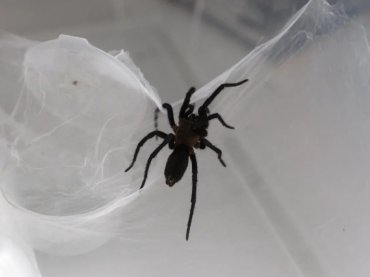
ITMO University scientists in collaboration with their colleagues from the Swedish University of Agricultural Sciences (SLU University), Uppsala, Sweden, have developed biocomposites made of proteins based on natural spider silk and optically active nanoparticles. What is remarkable about the new material is that it combines the properties of natural silk fiber and synthetic particles. The biocomposite has unique mechanical characteristics and can give a detectable optical response when exposed to infrared radiation, which makes it a potential candidate for biomedical applications.
Development of new materials with unique properties is today one of the top priorities for researchers. Now that nanotechnologies are being developed rapidly, qualitatively new hybrid materials with an expanded range of functional properties can be obtained.
Spider silk has long been considered one of the most interesting biological components for creating new materials. Consisting of protein molecules, long chains made of thousands of amino acids, it offers a much better quality than its artificial counterparts. Spider silk fiber has areas where several protein chains are connected via stable chemical bonds, which ensures its strength, while areas between these compounds ensure its high elasticity.
In addition to that, spider silk has a range of interesting biological properties: it is biocompatible, has high values of cell growth factors and their adhesion, and its proteins are genetically adaptive. All this makes spider silk a potential candidate for medical applications, for example, in surgery and transplantology.
Depending on the type of nanoparticles used for their modification, functional hybrid materials can acquire new properties needed for a particular application.
As a result of successful collaboration between scientists from ITMO University’s SCAMT Laboratory and the led by professor Vadim Kessler and associate professor Gulaim Seisenbaeva from the SLU University (Sweden), biocomposites made of spider silk proteins and hafnium and zirconium oxide nanoparticles doped with rare-earth ions have been developed. The researchers have shown that hybrid materials made of spider silk fiber and coated with a uniform layer of inorganic nanoparticles can be optically active while remaining strong and elastic. Apart from that, the researchers have managed to prove that the resulting composites are biologically compatible.